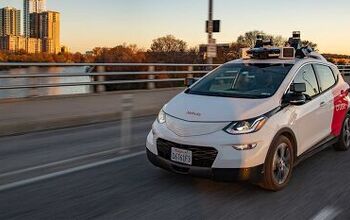Does Better Place Have A Better Plan?

If cross-country road trips are the quintessential American journey of the 20th century, I’m a quintessential American. I’d ridden thrice between Seattle and Boston by the time I was eight. At 17, I drove from Boston to Palo Alto, then back a year later, in a beat up ‘62 Falcon. I crossed the US another eight times—including once respectively by train and bicycle—while a student at Berkeley. Three decades later, I’m longing to do it again. Unfortunately, the 20th century is over. Since it began, the US and world populations have quadrupled. We’re straining world oil production capacity, and the specter of global heating and acidified seas from CO2 emissions is causing cognitive dissonance in my car-loving head. Driving’s future seems uncertain. But a new company, Better Place of Palo Alto, has a plan.
Already, two tiny Massachusetts-sized countries, Israel and Denmark, have signed-up for Better Place’s plan. Another 25 countries, both small and big, as well as Hawaii, are reportedly interested. Better Place offers a few rays of hope for a healthy planet free from thrall to oil-soaked thug-nations. Nonetheless, in this brave new world, the romance of the open road is but a dream.
Why? Batteries. And don’t hold your breath for technological deus ex machina. “Electrochemistry is, by definition, hell on materials,” says John DeCicco, of the Environmental Defense Fund. Lithium ion phosphate, which will power the Better Place fleets, improves power density and charge-cycle endurance—to a claimed 2,000 cycles. Even so, some 500 lbs. of batteries will limit the Israeli and Danish Renaults’ range to 60 to 100 miles.
By 2011’s end, Better Place promises to blanket Israel’s 10,000 square miles with a grid of 500k charge spots, about 50 per square mile. Israeli customers will be able to replenish their battery at home, at work, and all over the place. If they must push the range limits, they can exchange their depleted battery for a fully charged one in less than five minutes at one of Better Place’s specialized battery swap-out stations—no extra charge. But these will number only 100 in this 290-mile long country. Nonetheless, Israelis and Danes will save big on the 70 percent and 180 percent taxes their respective countries levy on internal combustion engine (ICE) cars.
According to Dan Sperling, battery swapping raises some red flags. Its “many flaws” include “the issue of standardizing across model lines, never mind across car companies,” maintains the director of the Institute of Transportation Studies at UC Davis (who erroneously thought Better Place might be switching to fast charging). Greg Nowell, of SUNY Albany, worries about the cost of transporting all these 500-pound replacement packs to the swap-out stations. He also warns of the possibility that peaks in demand—such as holidays—may present intermittent supply problems.
Should the program come to America, the cost for the mileage contract would run around $500/month. A Better Place spokesperson says the precise figure would vary with mileage. But a substantial monthly rebate would accrue, varying according to local costs and incentives. The EVs would be competitive with ICE cars. You would, in theory, save $10k-12k on the batteries. All this is very roughly equivalent to the cost of new car ownership.
Could it work in a country the size of the U.S.? Better Place says a “mass roll-out” of the infrastructure here would cost $100b. “When compared to the $500 to $600 billion the U.S. spends on oil imports annually, we’re talking about a five year plan that will change our economy,” the spokesperson says.
The EV company says that if 84 percent of America’s 200m cars switched to electricity overnight, no new power plants would be needed. Indeed, all those batteries could aid the transition to renewable energy sources, by storing excess coming off of wind and solar farms.
Competition? All else equal, the far simpler EVs should be cheaper than hybrids (or even conventional ICE) to manufacture and maintain, and potentially more reliable. From government’s point of view, Better Place is great for balance of payments and geopolitics. But “battery electrics won’t out-compete gasoline hybrids anytime soon,” Sperling admits.
That said, Sperling says Better Place is “all very doable,” adding that “there has to be resolve by government, risk-taking by companies, and willingness to change behavior on the part of consumers.” At current gas prices, which he says will not go higher long term without aggressive fuel or carbon taxes, he foresees a market potential of about 25 percent, chiefly among two car households.
Better Place may not be the dream of a high octane pistonhead, but it could well relieve pressure on all that we hold dear.

I'm a freelance journalist covering science, medicine, and automobiles.
More by David C. Holzman
Latest Car Reviews
Read moreLatest Product Reviews
Read moreRecent Comments
- Calrson Fan Jeff - Agree with what you said. I think currently an EV pick-up could work in a commercial/fleet application. As someone on this site stated, w/current tech. battery vehicles just do not scale well. EBFlex - No one wanted to hate the Cyber Truck more than me but I can't ignore all the new technology and innovative thinking that went into it. There is a lot I like about it. GM, Ford & Ram should incorporate some it's design cues into their ICE trucks.
- Michael S6 Very confusing if the move is permanent or temporary.
- Jrhurren Worked in Detroit 18 years, live 20 minutes away. Ren Cen is a gem, but a very terrible design inside. I’m surprised GM stuck it out as long as they did there.
- Carson D I thought that this was going to be a comparison of BFGoodrich's different truck tires.
- Tassos Jong-iL North Korea is saving pokemon cards and amibos to buy GM in 10 years, we hope.


































Comments
Join the conversation
David, If it's just a side benefit, then they would help themselves by not bringing it up. It makes me question their credibility and therefore, everything they say. The side benefit is impractical at best. Unless you start plugging the cars into the grid during the day (which most places have zero infrastructure for), you won't be able to store any excess capacity from solar and wind that mostly only produce during the day. Joeaverage, You have an excellent point. Let's all hope that the many of the new vehicle innovations bring us new competitors to the market place. While we are hoping, how about let's do something about it and stop subsidizing the entrenched competition.
Wind does not have a significant night/day rhythm. Solar has but daytime consumption of electricity is so much higher than nighttime consumption (and a lot of electricity use is shifted to the night because electricity is than cheaper) that the problem only starts to appear when solar is a big share of total electricity production and than first in the weekends.